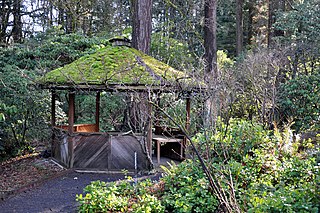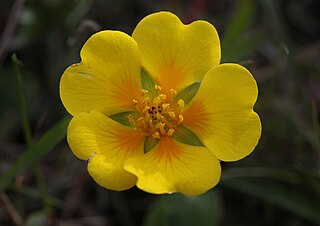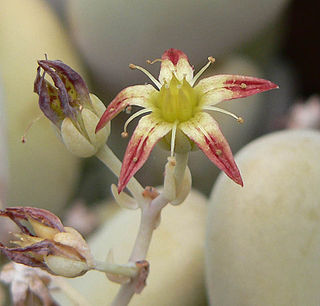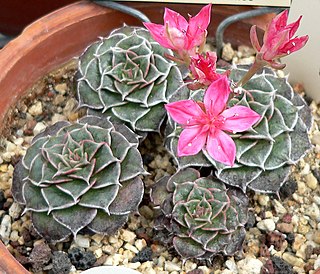
The Magellanic subpolar forests are a terrestrial ecoregion of southernmost South America, covering parts of southern Chile and Argentina, and are part of the Neotropical realm. It is a temperate broadleaf and mixed forests ecoregion, and contains the world's southernmost forests.

Haleakalā National Park is a national park of the United States located on the island of Maui, Hawaii. Named after Haleakalā, a dormant volcano within its boundaries, the park covers an area of 33,265 acres, of which 24,719 acres is a wilderness area. The land was designated a national park in 1976 and its boundaries expanded in 2005.

The ecology of the Sierra Nevada, located in the U.S. states of California and Nevada, is diverse and complex. The combination of climate, topography, moisture, and soils influences the distribution of ecological communities across an elevation gradient from 500 to 14,500 feet. Biotic zones range from scrub and chaparral communities at lower elevations, to subalpine forests and alpine meadows at the higher elevations. Particular ecoregions that follow elevation contours are often described as a series of belts that follow the length of the Sierra Nevada. There are many hiking trails, paved and unpaved roads, and vast public lands in the Sierra Nevada for exploring the many different biomes and ecosystems.

The Mesker Park Zoo and Botanic Garden is a zoo that opened in 1928 in Evansville, Indiana, United States. It is located in Mesker Park on Evansville's northwest side and is run by the City of Evansville.

Berry Botanic Garden was a botanical garden in southwest Portland, Oregon, in the United States. In addition to large collections of alpine plants, rhododendrons, primulas, and lilies, it was known for its plant-conservation program and its large seed bank that protects rare or endangered plants of the Pacific Northwest. The seed bank, formally established in 1983, was thought to be the first in the U.S. that was devoted entirely to preserving rare native plants.

Ironwood Forest National Monument is located in the Sonoran Desert of Arizona. Created by Bill Clinton by Presidential Proclamation 7320 on June 9, 2000, the monument is managed by the Bureau of Land Management, an agency within the United States Department of the Interior. The monument covers 129,055 acres (52,227 ha), of which 59,573 acres (24,108 ha) are non-federal and include private land holdings and Arizona State School Trust lands.

Potentilla hickmanii is an endangered perennial herb of the rose family. This rare plant species is found in a narrowly restricted range in two locations in coastal northern California, in Monterey County, and in very small colonies in San Mateo County. This small wildflower, endemic to western slopes of the outer coastal range along the Pacific Ocean coast, produces bright yellow blossoms through spring and summer.

Graptopetalum paraguayense is a species of succulent plant in the jade plant family, Crassulaceae, that is native to Tamaulipas, Mexico. Common names include mother-of-pearl-plant and ghost plant. This is not to be confused with Monotropa uniflora which is also referred to as the “Ghost plant”. G. paraguayense has white flowers which have a form of a star. The Graptopetalum paraguayense is called the ghost plant because of the residue on the leaves making it look like a ghost.

Astragalus canadensis is a common and widespread member of the milkvetch genus in the legume family, known commonly as Canadian milkvetch. The plant is found throughout Canada and the United States in many habitats including wetlands, woodlands, and prairies.

Graptopetalum (leatherpetal) is a plant genus of the family Crassulaceae. They are perennial succulent plants and native to Mexico and Arizona. They grow usually in a rosette. There are around 19 species in this genus.

Graptopetalum amethystinum, also called jewel-leaf plant, is a plant belonging to the succulent genus Graptopetalum. It is native to Mexico.

Graptopetalum bellum is a species of flowering plant in the stonecrop family Crassulaceae, native to northern Mexico. It was discovered by Alfred Lau in 1972 in the states of Chihuahua and Sonora, at an altitude of 1,460 m (4,800 ft).

The Huachuca Mountains are part of the Sierra Vista Ranger District of the Coronado National Forest in Cochise County in southeastern Arizona, approximately 70 miles (110 km) south-southeast of Tucson and southwest of the city of Sierra Vista. Included in this area is the highest peak in the Huachucas, Miller Peak, and the region of the Huachucas known as Canelo Hills in eastern Santa Cruz County. The mountains range in elevation from 3,934 feet (1,199 m) at the base to 9,466 feet (2,885 m) at the top of Miller Peak. The second highest peak in this range is Carr Peak, elevation 9,200 feet (2,804 m). The Huachuca Mountain area is managed principally by the United States Forest Service (41%) and the U.S. Army (20%), with much of the rest being private land (32%). Sierra Vista is the main population center.

Arctostaphylos imbricata is a species of manzanita known by the common name San Bruno Mountain manzanita.
The Bonny Doon Ecological Reserve is a nature preserve of 552 acres (2.23 km2) in the Santa Cruz Mountains of California, United States. The reserve protects several rare and endangered plant and animal species within an area known as the Santa Cruz Sandhills, an ancient seabed containing fossilized marine animals.

The neon flying squid, sometimes called the red flying squid, akaika, and red squid is a species of large flying squid in the family Ommastrephidae. They are found in subtropical and temperate oceanic waters globally.

Diplazium molokaiense is a rare species of fern known by the common name Molokai twinsorus fern. It is endemic to Hawaii, where it is one of the rarest ferns. It has historically been found on the islands of Kauai, Oahu, Lanai, Molokai, and Maui, but it is thought to have been extirpated from four of them and today can be found only on Maui where fewer than 70 individual plants remain. The fern was federally listed as an endangered species of the United States in 1994.

Iliamna corei is a rare species of flowering plant in the mallow family known by the common name Peters Mountain mallow. It is endemic to Virginia in the United States, where it is known only from Peters Mountain in Giles County. A single occurrence remains. This is a federally listed endangered species. It is considered "one of the rarest native plants in the United States."

Lilaeopsis schaffneriana is a rare species of flowering plant in the family Apiaceae known by the common names Schaffner's grasswort and cienega false rush.

Patagonia National Park Is a National Park in Chile with a natural path where people formally walk on tracks



















